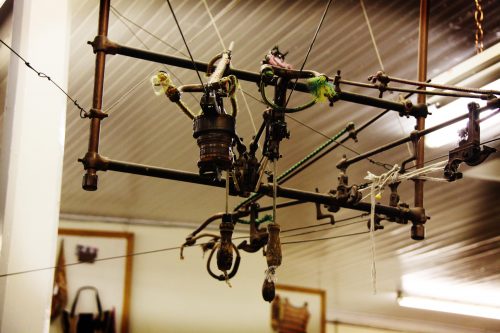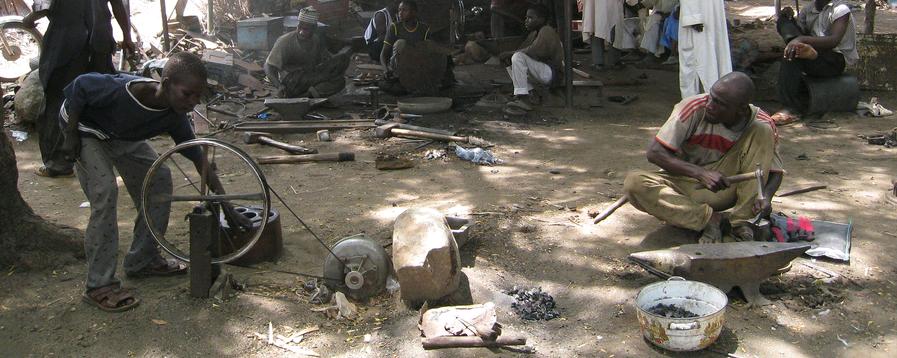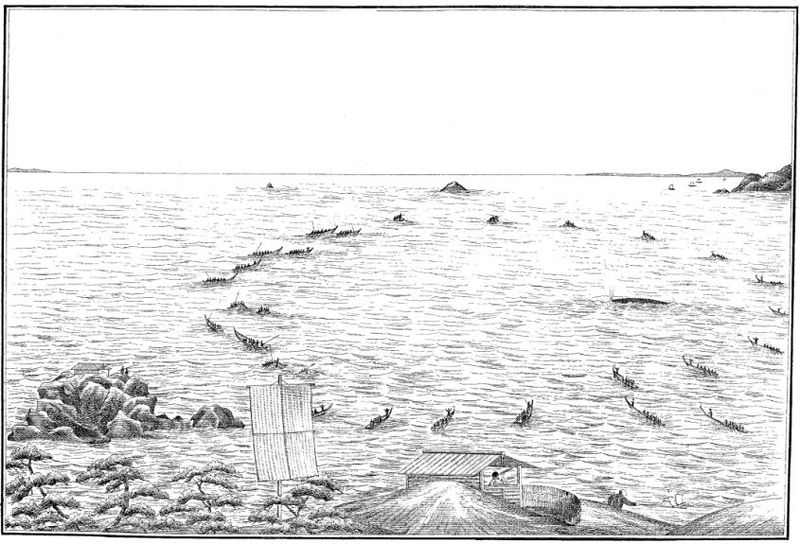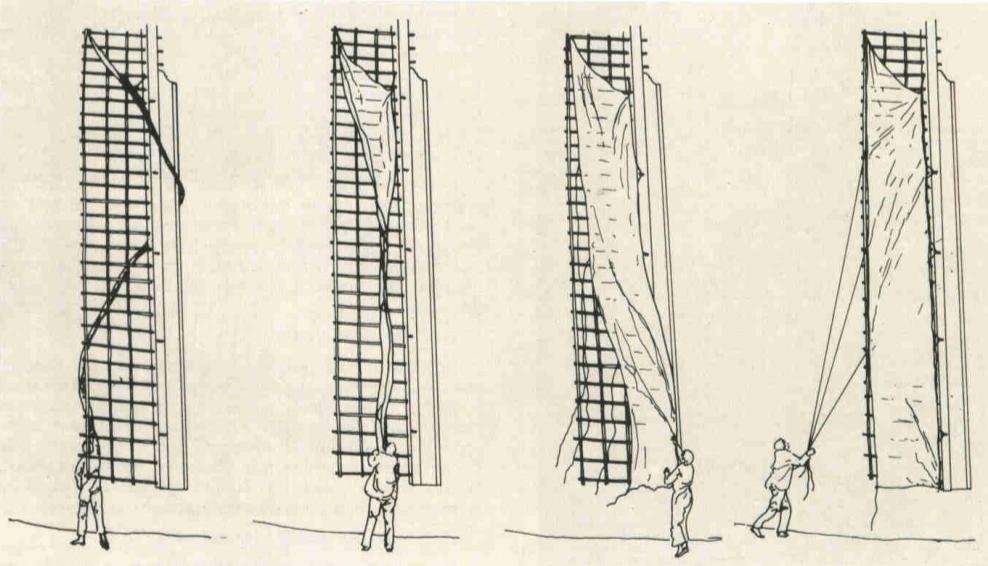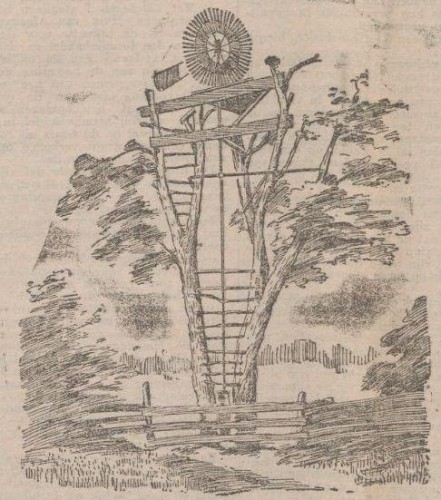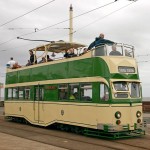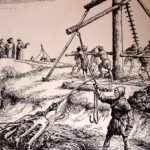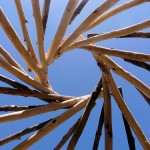Low-tech Magazine editor Shameez Joubert spotted this cash ropeway in Grahamstown, South Africa.
Cash ropeways were used in shops from the 1880s to the 1960s. They worked in a similar manner to large-scale cargo ropeways. Bicable cash transportation systems were powered by a catapult device or by separation of the wires, monocable systems were operated by a small electric motor.
The Cash Railway Website is dedicated to cash ropeways and similar systems, but it does not mention any ropeway still in use. The system in the South African shop was installed in the 1960s and it still works. Thank you, Shameez!
